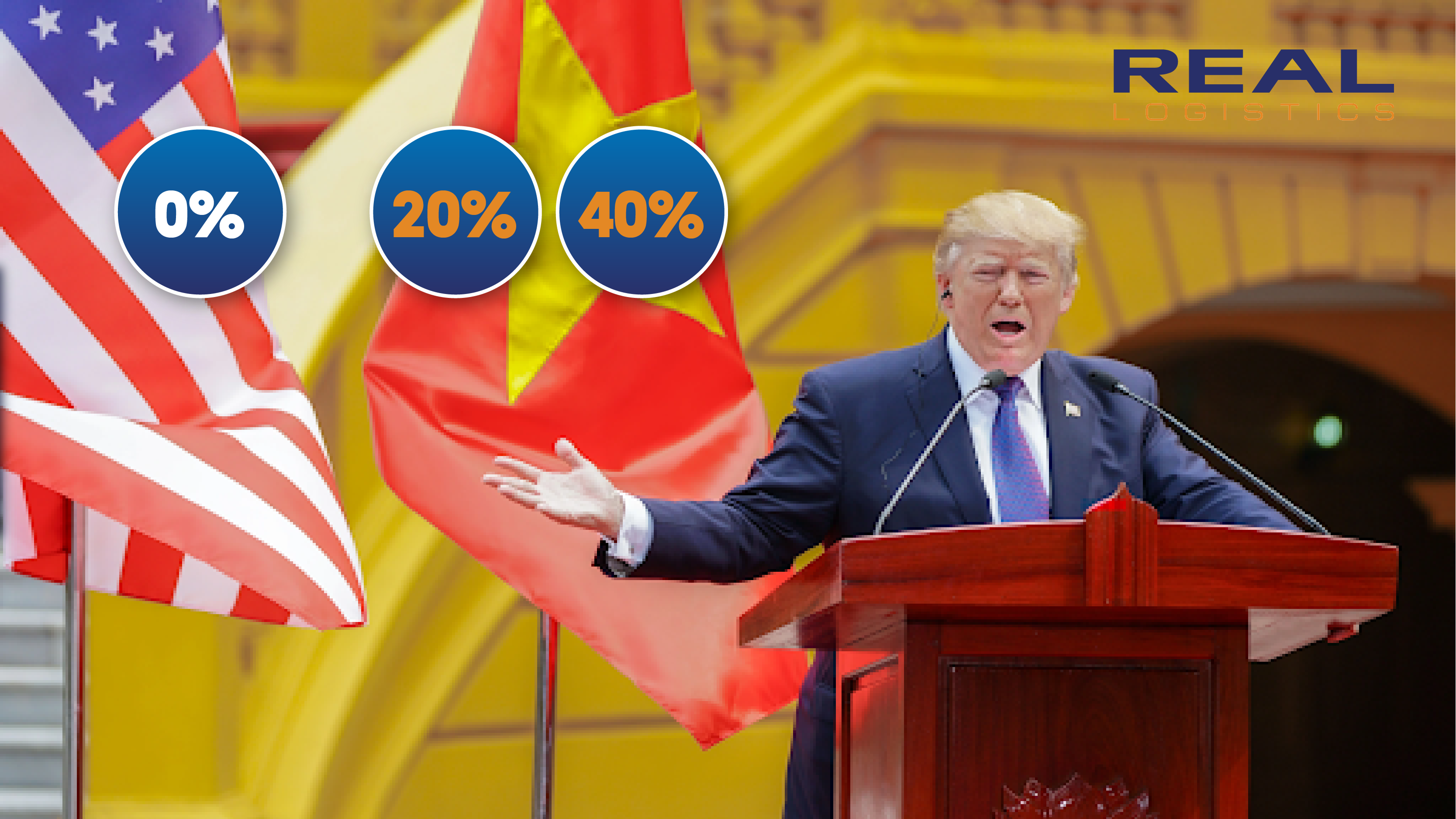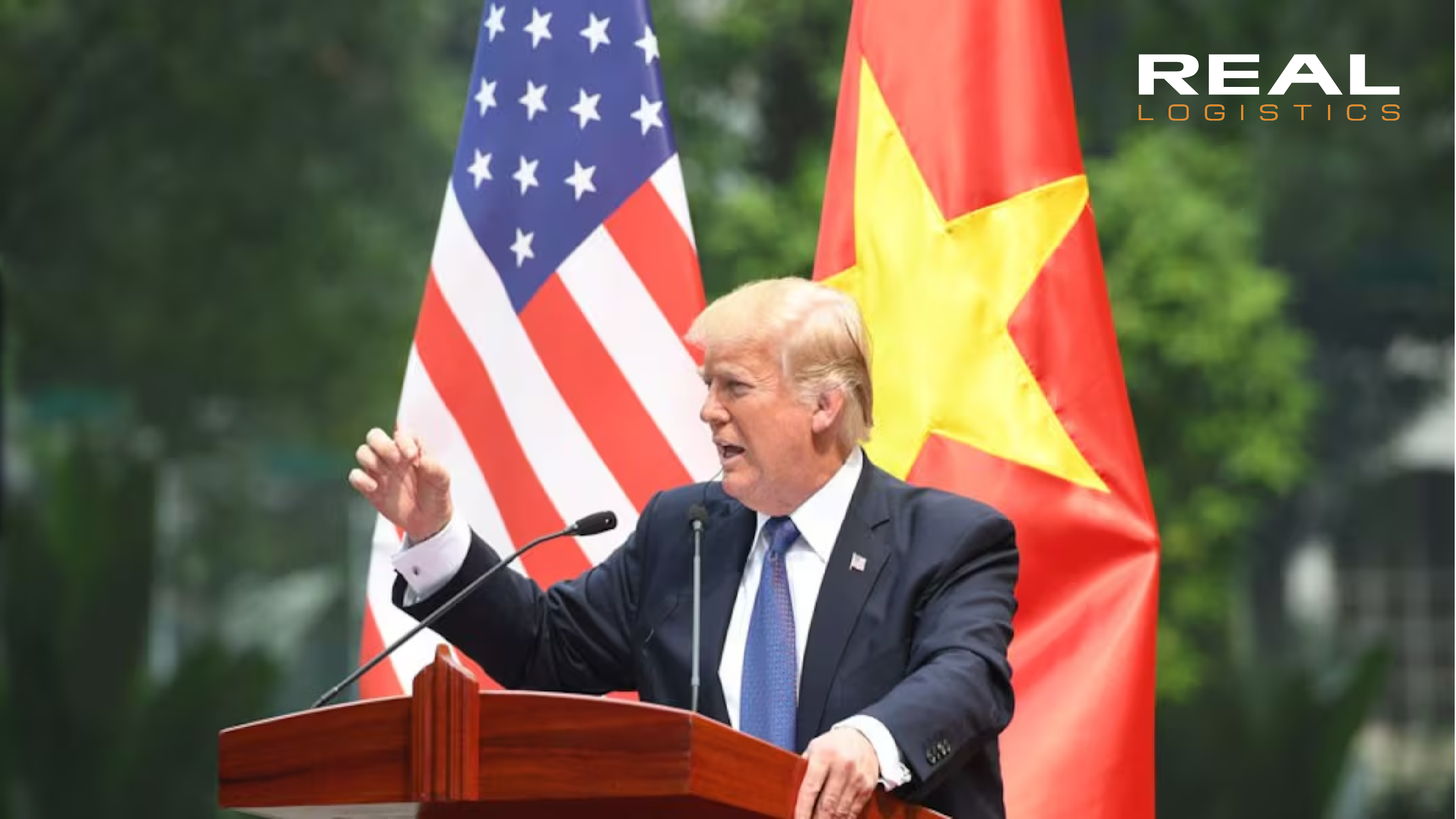U.S. Officially Imposes 20% Tariff on Vietnamese Goods: An Action Plan for Businesses
In a move that reshapes bilateral trade relations, U.S. President Donald Trump has officially announced the imposition of new tariffs on goods from Vietnam. This decision, following months of negotiations, creates a new legal reality that all Vietnamese export businesses must immediately face and adapt to.
This article will update on the new policy, provide an in-depth analysis of its impact from various expert perspectives, and outline an emergency 3-step action plan. The new era of trade demands a strategic and rapid response from Vietnamese enterprises.
1. The New Tariff Policy
On the evening of July 2, 2025, Vietnam time, the White House officially announced a new trade policy for Vietnam. Key points include:
- 20% Tariff on Vietnamese Exports: A range of goods imported from Vietnam into the U.S. market will be subject to a new 20% tariff rate. A detailed list of affected products will be released by the United States Trade Representative (USTR) in the near future.
- 40% Tariff on Transshipped Goods: This is a harsh punitive measure aimed at products determined to be fraudulently routed, i.e., goods from a third country that undergo minimal processing in Vietnam to obtain a "Made in Vietnam" label to evade tariffs.
- 0% Tariff on U.S. Imports: To rebalance trade, Vietnam will open its market, allowing many U.S. products to be imported at a 0% tariff rate.
The official reason for this decision is to address the growing bilateral trade deficit and to prevent unfair trade practices.

2. Practical Impacts of the Tariff Policy
Although initially assessed as a success for Vietnam, the policy still creates complex impacts that need to be viewed from various professional perspectives.
2.1. Policy Ambiguity: Two Scenarios for the 20% Tariff
The greatest uncertainty at present, highlighted by both U.S. experts and Vietnamese financial institutions like Techcombank, is the unclear nature of the 20% tariff. Two main scenarios are possible
- Scenario 1 (Negative): The 20% is an additional retaliatory tariff on top of the current MFN rate. For example, the garment industry could face a total tariff of up to 34% (14% MFN + 20% new)
. - Scenario 2 (More Positive): The 20% is a new flat, total tariff that replaces the old rates. In this scenario, the garment industry would only face a 20% tariff, which is lower than the current 24% (14% MFN + 10% old)
.
In its report, Techcombank temporarily leans towards Scenario 2, based on an analysis of President Trump's communication style in the China deal, where he often announced the highest composite tariff
Read detailed report from Techcombank: Here
2.2. View from Industry Associations and Compliance Risk
Regardless of the scenario, associations in Vietnam still warn of immense pressure on already thin profit margins. However, regarding the risk of a 40% tariff on transshipped goods, in-depth analyses offer a more optimistic view. According to studies cited by Techcombank from Harvard Business School and UC San Diego, the value of transshipped goods through Vietnam is estimated to be "not large and the impact will not be too severe"
2.3. Perspective from Vietnamese Industry Associations (VITAS, VASEP, etc.)
Industry associations in Vietnam have warned that the 20% tariff could entirely wipe out profit margins for labor-intensive sectors such as textiles and footwear. They express concern that U.S. buyers may cancel orders or demand significant price cuts, potentially leading to losses. (Source: Quick Report by the Vietnam Textile and Apparel Association – VITAS, July 3, 2025)
2.4. The U.S. Debate: Who Really Foots the Bill?
In the U.S., experts are also divided.
One side argues it brings “stability at a cost.” Mr. Matt Priest, CEO of the Footwear Distributors and Retailers of America (FDRA), pointed out that Vietnam accounts for over 50% of the U.S. imported sports footwear market. He emphasized that although a 20% tariff is high, it is still far better than the previously proposed 46% scenario, providing the retail industry with a clearer foundation for policy planning. However, he also raised a practical concern: it remains unclear whether this 20% tariff replaces existing duties or will be added on top — a lack of clarity that makes business planning difficult. (Quoted from Women Power)
The opposing side insists this is a “flawed deal, with U.S. consumers footing the bill.” Mr. Aon Richlin-Melnck from the American Immigration Council highlighted a crucial point: it is U.S. importers — not Vietnamese exporters — who will pay the tariff. With $140 billion in imported goods from Vietnam, a 20% tariff would impose an additional $28 billion in taxes on American companies. This cost will ultimately be passed on to retail prices, making American consumers the ones who suffer most. From this perspective, the agreement harms both U.S. businesses and the public. (As analyzed on New Republic)

3. An Emergency 3-Step Action Plan for Businesses
In this context, proactivity is everything. Businesses should immediately implement the following three actions:
Step 1: Re-evaluate Costs and Build Scenarios
- Model the impact: Immediately recalculate the cost of goods sold (COGS) under both tariff scenarios (additive and total) to understand the risks and opportunities
. - Negotiate to "share" the burden: Work immediately with U.S. buyers on price adjustments. Review contract clauses related to tariff changes.
- Optimize internal costs: Review the inbound supply chain to renegotiate raw material prices and optimize logistics and production costs.
Step 2: Conduct an Urgent Certificate of Origin (C/O) Audit
- Strengthen documentation: Build a robust file to prove significant value-added in Vietnam, rather than relying solely on the C/O certificate.
- Work with experts: Immediately consult with law firms and customs advisors to audit the entire process, ensuring absolute compliance.
- Be transparent and ready: Prepare documentation to respond to inquiries from the U.S. Customs and Border Protection (CBP).
Step 3: Restructure Strategy and Find New Opportunities
- Defense - Diversify markets: Accelerate plans to penetrate other markets with existing FTAs, such as the EU (EVFTA), Japan (CPTPP), South Korea, and ASEAN.
- Offense - Exploit 0% tariff opportunities: Research strong U.S. products (e.g., agricultural goods, pharmaceuticals, machinery) to find opportunities in importing and distributing within the domestic market.
The new U.S. tariff policy is a multifaceted challenge that requires a comprehensive view. It is not just a matter of cost, but also a test of transparency, compliance, and strategic vision. The businesses that can pass this "test" will not only survive but also emerge stronger in a reshaped global trade landscape.
Looking to optimize your logistics costs amid shifting tariffs? Real Logistics offers comprehensive import-export consulting services, supporting businesses with market analysis, accurate HS code classification, fast customs clearance, and efficient transportation planning — helping you minimize risks and optimize overall costs.
—————————————
Real Logistics Co.,Ltd
👉 Facebook: Real Logistics Co.,Ltd
☎️ Hotline: 028.3636.3888 | 0936.386.352
📩 Email: info@reallogistics.vn | han@reallogistics.vn
🏡 Address: 39 - 41 B4, An Loi Dong, Thu Duc, HCM City
51 Quan Nhan, Nhan Chinh, Thanh Xuan, Ha Noi City

